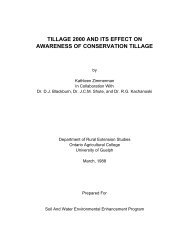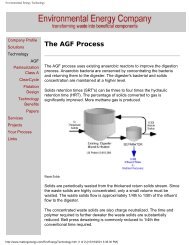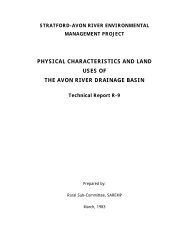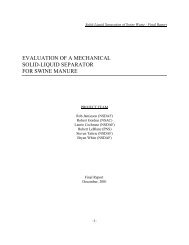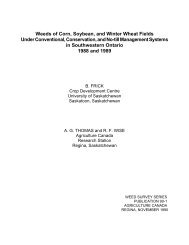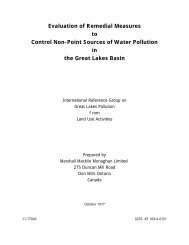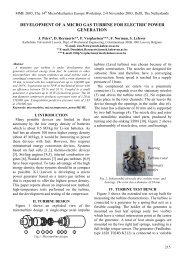The Applications of Chemical Analyses of Sediments and Soils in ...
The Applications of Chemical Analyses of Sediments and Soils in ...
The Applications of Chemical Analyses of Sediments and Soils in ...
Create successful ePaper yourself
Turn your PDF publications into a flip-book with our unique Google optimized e-Paper software.
A correlation was found between total Fe, Mn <strong>and</strong> P <strong>in</strong> Lake Muskoka sediments,Ontario (Brydges, 1970). Similarly changes <strong>in</strong> pH <strong>and</strong> redox conditions have majoreffects on the solubility <strong>of</strong> manganese.SULPHIDEPrecipitation <strong>of</strong> some heavy metal sulphides <strong>in</strong> flooded soils <strong>and</strong> sediments is animportant mechanism regulat<strong>in</strong>g the solution concentration <strong>of</strong> S 2- <strong>and</strong> the metal ionsFe 2+ , Mn 2+ , Zn 2+ , Cu 2+ <strong>and</strong> Hg 2+ . Under anaerobic conditions these sulphides were foundto be very stable (Engler <strong>and</strong> Patrick, 1975).Sulphide reduc<strong>in</strong>g <strong>and</strong> methane produc<strong>in</strong>g bacteria <strong>in</strong> the bottom deposits <strong>of</strong>fresh water lakes appear to play an important role (Cappenberg, 1974). <strong>The</strong> sulphatereducers were most abundant at the 0-2 cm depth, produc<strong>in</strong>g H 2 S, with methaneproducers at 3 to 6 cm depth. <strong>The</strong> sediment <strong>in</strong> the deepest part <strong>of</strong> the lake were black<strong>in</strong> colour due to precipitated iron sulphide.PHOSPHATE<strong>The</strong> phosphate m<strong>in</strong>eral apatite (Ca 5(PO 4) 3F(Cl,OH) occurs <strong>in</strong> Great Lakespost-glacial sediments. Vivianite (Fe(PO 4 ) 2 8H 2 O) is important <strong>in</strong> controll<strong>in</strong>g aqueousphosphate concentration <strong>and</strong> <strong>of</strong>ten occurs <strong>in</strong> s<strong>and</strong> size nodules (Dell, 1973). Brydges(1970) suggested iron was the most important release factor for Lake Muskoka (Ont.)sediments under anaerobic conditions. Lead phosphates are present <strong>in</strong> soils <strong>of</strong><strong>in</strong>termediate pH, lead sulphate <strong>in</strong> very acid soils. <strong>and</strong> lead carbonate above pH 719




